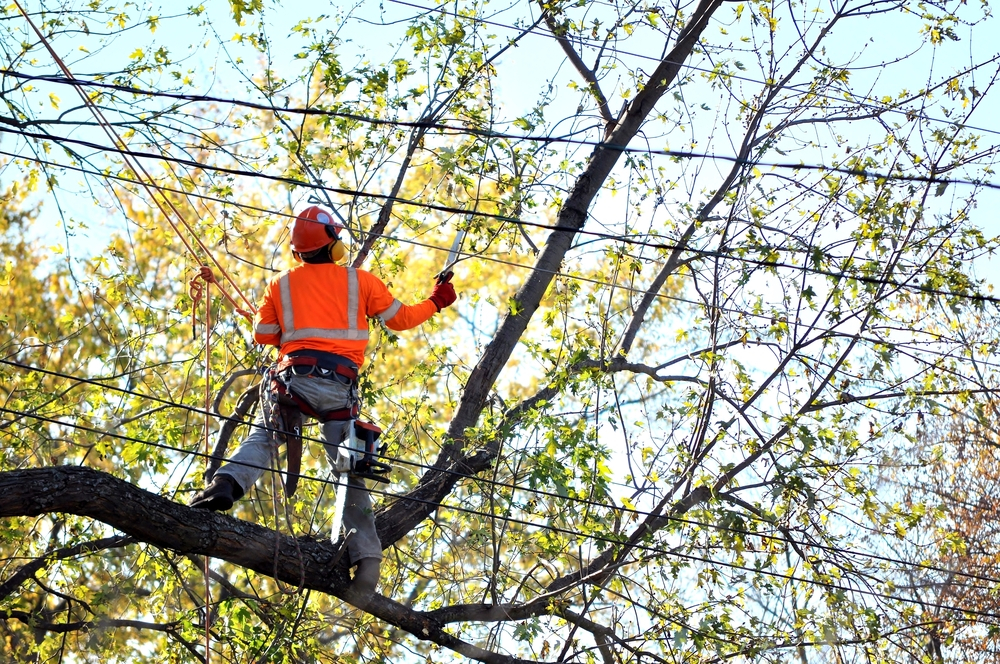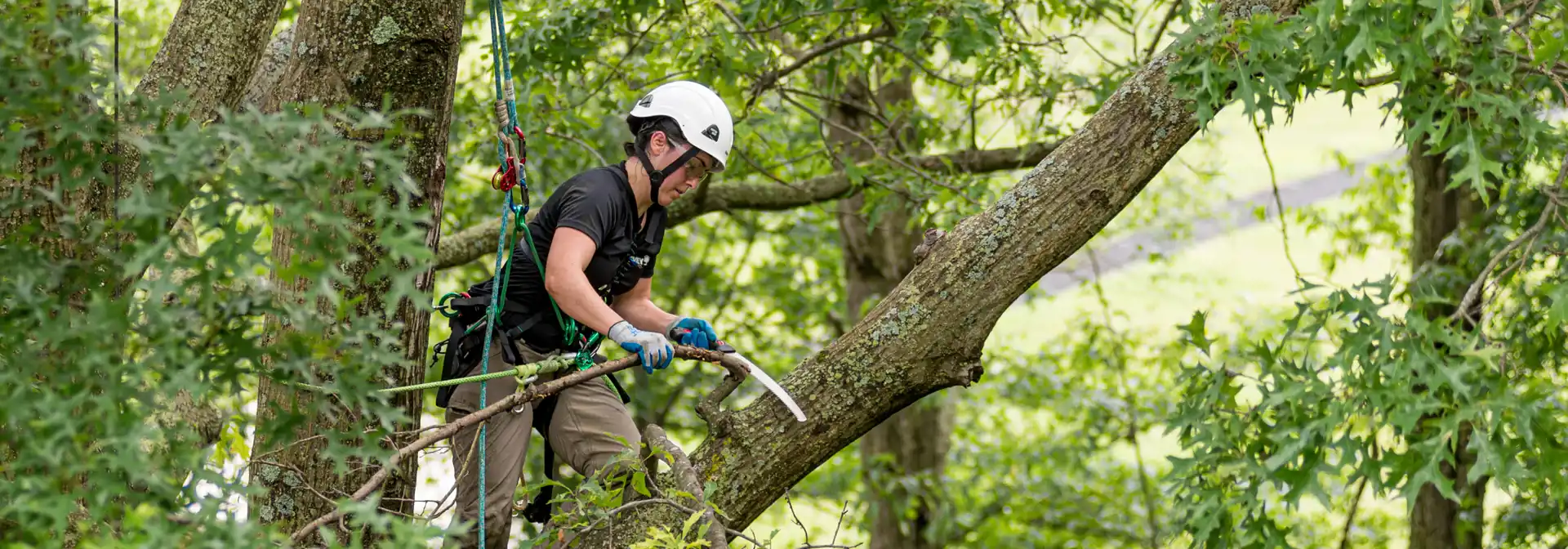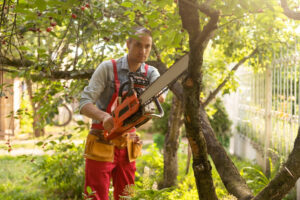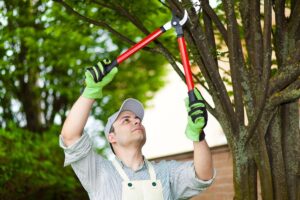The Essential Guide to Tree Trimming and Pruning
Trees are beautiful and vital components of any landscape, providing shade, clean air, and habitats for wildlife. To ensure they continue to thrive and offer these benefits, trees require regular maintenance. One crucial aspect of tree care is trimming and pruning. In this blog post, we will explore the importance of tree trimming and pruning, how to recognize when your tree needs attention, and provide practical tips for maintaining your trees effectively.
Signs that Your Tree Needs Trimming or Pruning
- Overgrown Branches: One of the most apparent signs that a tree needs trimming or pruning is the presence of overgrown branches. These branches can become entangled in power lines or obstruct pathways and views. Overgrowth can also stress the tree, making it more susceptible to disease and damage.
- Dead or Diseased Branches: Dead or diseased branches are clear indicators that a tree needs attention. These branches are not only unsightly but can also pose significant safety hazards. They can fall unexpectedly, causing injury or property damage. Moreover, dead or diseased branches can spread pathogens to healthy parts of the tree.
- Crowded Canopy: A crowded canopy, where branches cross over each other, is another sign that trimming or pruning is necessary. This overcrowding can restrict air circulation and sunlight penetration, creating a favorable environment for pests and diseases. It also weakens the tree’s structure, making it more prone to damage during storms.
- Low-Hanging Branches: Low-hanging branches can be dangerous for people and vehicles passing by. They can obstruct walkways, driveways, and sightlines. Trimming these branches improves safety and accessibility, ensuring that the tree remains a beneficial asset rather than a hazard.

Benefits of Tree Trimming and Pruning
- Promotes Tree Health: Regular trimming and pruning significantly enhance tree health. Removing dead or diseased branches prevents the spread of pathogens and pests. Pruning also promotes healthy growth by allowing better air circulation and sunlight exposure, essential for photosynthesis and overall vitality.
- Improves Tree Appearance: A well-pruned tree looks more aesthetically pleasing. Trimming helps maintain a balanced and attractive shape, enhancing the overall landscape. A well-maintained tree can also increase property value, making your home more appealing to potential buyers.
- Increases Safety: Safety is a primary concern when it comes to tree maintenance. Trimming and pruning remove potentially hazardous branches, reducing the risk of accidents and damage. This is especially important in areas prone to severe weather, where strong winds and storms can cause significant harm.
Timing for Tree Trimming and Pruning
- Different Seasons for Different Types of Trees: The timing for tree trimming and pruning varies depending on the type of tree. For deciduous trees (those that lose their leaves in the fall), the best time to prune is during their dormant season in late winter or early spring. This timing minimizes stress on the tree and allows it to heal before the growing season. Evergreen trees, on the other hand, can be pruned in late winter or early spring, just before new growth appears. This timing ensures that the tree can recover quickly and maintain its shape and health.
- How Often Should Trees Be Trimmed or Pruned?: The frequency of trimming or pruning depends on the tree species and its growth rate. Fast-growing trees may require trimming every 3-5 years, while slower-growing trees can go longer without needing attention. Regular inspections will help you determine the best schedule for your specific trees.
Tools Needed for Trimming and Pruning
- Loppers: Loppers are essential for cutting branches up to 2 inches in diameter. They provide the leverage needed for clean cuts on thicker branches. Look for loppers with long handles and sharp blades for maximum efficiency.
- Hand Pruners: Hand pruners are perfect for smaller branches and twigs. They are easy to use and allow for precise cuts, making them ideal for detailed pruning work. Choose bypass pruners, which make cleaner cuts than anvil pruners.
- Pole Pruners: Pole pruners extend your reach, allowing you to trim high branches without a ladder. These tools are especially useful for maintaining tall trees and ensuring safety while pruning. Opt for pole pruners with adjustable lengths and sturdy construction.
- Chainsaws: For larger branches and trees, a chainsaw is necessary. Chainsaws can quickly and efficiently cut through thick wood. Always prioritize safety when using a chainsaw, wearing protective gear and following manufacturer instructions.

Tips for Trimming and Pruning
Determine the Right Cutting Angle When trimming or pruning, always cut at a slight angle away from the bud or branch collar. This angle helps water runoff, preventing rot and promoting healthy healing. Avoid cutting too close to the trunk or main branch, as this can damage the tree.
Avoid Removing Too Much Foliage: While it might be tempting to trim extensively, removing too much foliage can harm the tree. Trees need leaves for photosynthesis, which provides the energy for growth and healing. Aim to remove no more than 25% of the tree’s canopy in a single session to avoid stressing the tree.
Make Clean Cuts: Clean cuts are crucial for tree health. Ragged or torn cuts can invite disease and pests. Use sharp tools and make smooth, precise cuts to promote rapid healing. If a branch tears or splinters, trim the damaged area to create a clean cut.
Conclusion
Tree trimming and pruning are essential for maintaining healthy, beautiful, and safe trees. By recognizing signs like overgrown, dead, or diseased branches, and understanding the benefits of regular maintenance, you can keep your trees in optimal condition. Proper timing and the right tools are crucial for effective tree care. Regularly check your trees and follow best practices to ensure they continue to enhance your landscape for years to come.
Taking the time to trim trees not only improves their appearance and safety but also promotes their long-term health. Remember, a well-maintained tree is a valuable asset to any property, providing shade, beauty, and numerous environmental benefits. So, make tree care a regular part of your landscape maintenance routine and enjoy the many rewards it brings.



